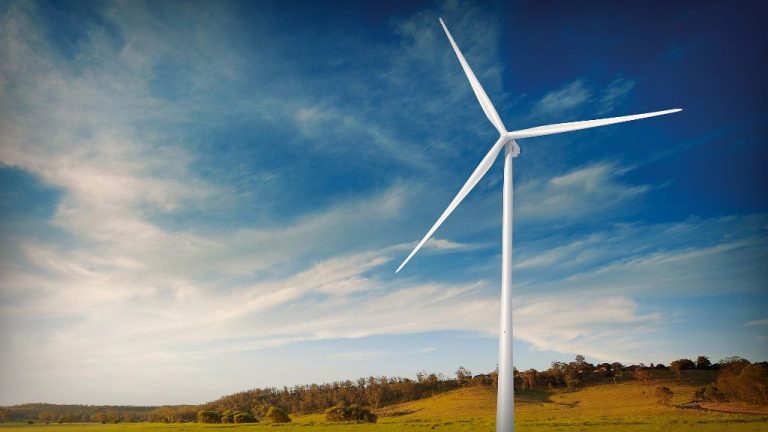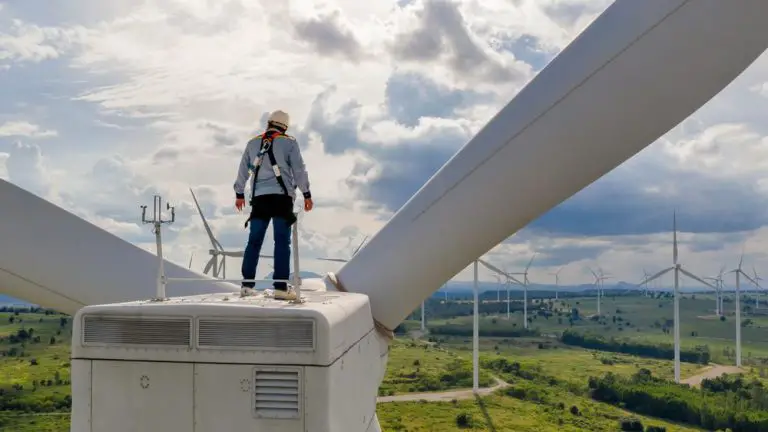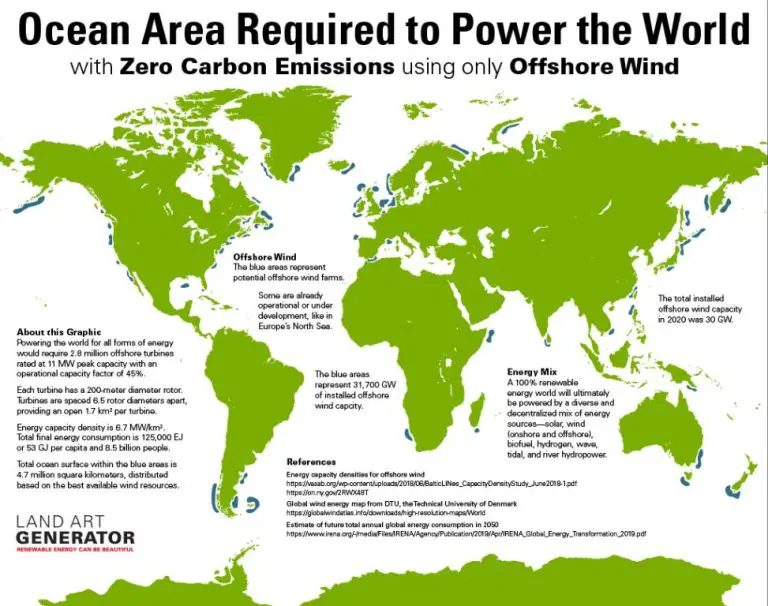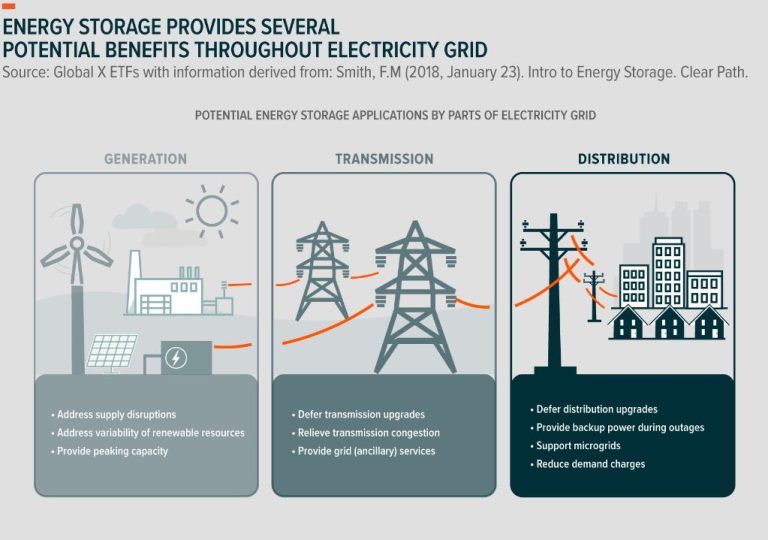Do Turbines Generate Ac Or Dc?
Electricity is generated through power plants that convert mechanical rotation into electrical power. This process is achieved by generators that produce alternating current (AC) or direct current (DC) electricity for distribution. Turbines are commonly used to drive the rotation of generators.
Turbines convert the kinetic energy of fluids like water, steam, combustion gases or air into mechanical energy through the rotation of blades mounted on a rotor. This rotational kinetic energy is transferred to the shaft of a generator to produce electricity. Turbines are a clean and efficient way to harness natural energy sources for power generation.
AC vs DC Current
AC stands for alternating current, while DC stands for direct current. The key difference between AC and DC is that the direction of flow of electrons in AC keeps switching between forward and backward, whereas in DC it flows in one direction only.
In AC, the flow of electrons changes direction periodically. The voltage level also varies continuously from zero to maximum in one direction, then zero to maximum in the other direction. In contrast, DC maintains a constant voltage that does not change direction.
AC is the preferred method for delivering power to homes, businesses, and the power grid. This is because AC can be transmitted over long distances more efficiently than DC due to AC’s ability to easily transform voltage up or down. However, DC is still used for some applications like electronics and automotive systems.
Generator Design
Generators convert mechanical energy into electrical energy using the principles of electromagnetism. At their most basic, generators consist of a rotor (which rotates) and a stator (which is stationary). The rotor contains magnets or electromagnets which spin past wire coils located in the stator, inducing an electric current in those coils. This current is the electric power output of the generator.
There are two main types of generators based on the kind of current they produce – alternating current (AC) generators, and direct current (DC) generators. In AC generators, the magnets on the rotor are oriented so that the magnetic field they produce rotates as the rotor spins. This causes the direction of current induced in the stator coils to constantly alternate, producing AC power. In DC generators, the magnetic field produced by the rotor maintains a constant orientation as it spins. This induces current in a single direction in the stator, resulting in DC power.
AC Generators
AC generators, also known as alternators, are commonly used in wind turbines and hydroelectric turbines to produce alternating current electricity. They work based on the principle of electromagnetic induction. The generator contains a rotor (the rotating part) and a stator (the stationary part).
The rotor is made up of electromagnets generated by the flow of direct current through coils of wire wrapped around an iron core. As the rotor spins inside the stator (which contains fixed magnets or coils), it continuously changes polarity from north to south and back again. This moving magnetic field induces an alternating electric current in the stationary windings of the stator through electromagnetic induction.
The alternating current generated has a sinusoidal waveform and changes direction at a fixed frequency – usually 50 or 60 Hz for power systems. The generator often has slip rings that allow transfer of the DC exciting current to the rotor. By varying this DC excitation, the output voltage can be controlled and adjusted as needed.
The AC power output from the generator is synchronized to match the frequency and phase of the grid for connecting wind and hydro turbines seamlessly into the electric grid. The generated voltage is stepped up to high transmission voltages through transformers before transmission.
DC Generators
DC generators, also known as direct current generators, produce a direct current or DC power output. In a DC generator, a coil rotates between the poles of a permanent magnet. As the coil rotates, the magnetic field induces a voltage across the coil. This changing voltage generates an electric current in the coil, resulting in a DC output.
DC generators are less commonly used in modern wind turbines than AC generators. But they have some advantages for small or residential wind turbine applications:
- DC power can be used directly, without needing inversion to AC.
- DC generators are simple, inexpensive, and low-maintenance.
- They may be better suited for battery charging or off-grid applications.
The main drawback of DC generators in wind turbines is that the output voltage varies with the rotor speed. Most applications require regulating the voltage to a constant level using additional power electronics. This adds complexity and cost compared to AC generators with steady voltage output.
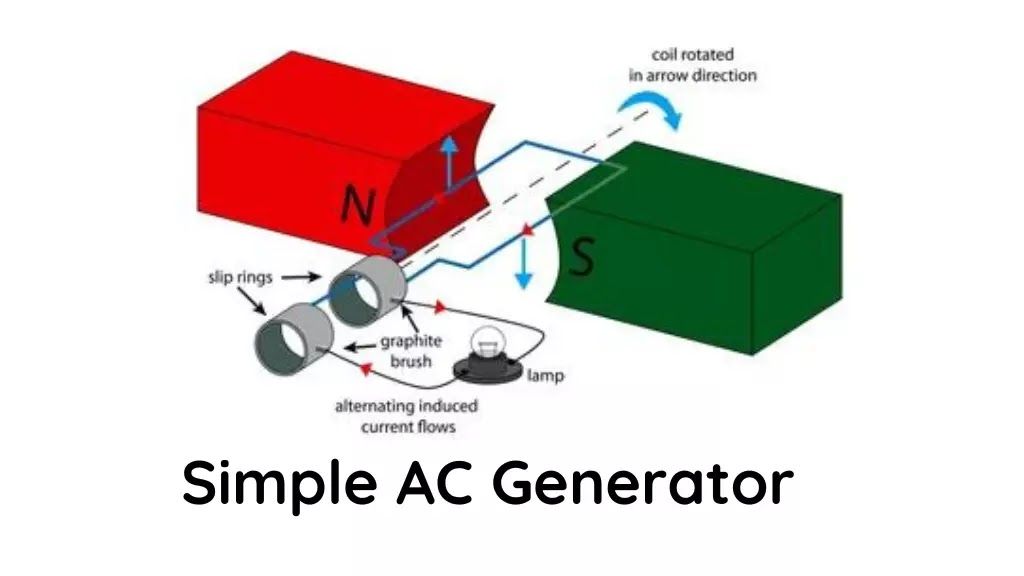
Turbine Generator Types
The most common types of turbine generators are:
-
Steam turbines – Typically use high-pressure steam from fossil fuel or nuclear power plants to spin the turbine. Most common in large power plants.
-
Gas turbines – Use combustion of natural gas or liquid fuels like kerosene to produce hot exhaust gas that spins the turbine. Often used for peak power or backup.
-
Hydro turbines – Use flowing water from dams or rivers to turn the turbine. Widely used for renewable hydroelectric power.
-
Wind turbines – Use natural wind flow over the blades to rotate the turbine. Increasingly common for wind farms and distributed renewable energy.
-
Microturbines – Small turbines under 500 kW used for onsite generation. Can run on various fuels like natural gas.
The optimal turbine type depends on the power source available and scale of generation needed. Larger power plants tend to use steam or hydro turbines, while smaller or renewable applications employ wind, gas or microturbines.
AC vs DC for Turbines
When it comes to choosing between AC and DC current for turbine generators, there are pros and cons to both options. AC is more commonly used for large-scale wind and hydroelectric turbines that connect to the utility grid. There are a few key reasons why AC dominates for turbine applications:
- AC can be easily transformed to high voltages which allows efficient long distance transmission with minimal losses. This is important for large power plants.
- The AC grid infrastructure is well established worldwide. Interfacing DC systems requires expensive power electronics equipment.
- Induction generator turbines are a simple, rugged AC design suitable for variable speed wind turbines.
- Synchronous AC generators allow control of voltage and reactive power output.
DC generators can make sense for some niche turbine applications. Benefits of DC systems include:
- DC-to-DC conversion can achieve higher efficiencies than AC-to-DC conversion steps.
- DC avoids synchronization issues when connecting multiple variable speed turbine generators.
- DC transmission has advantages for undersea high voltage links.
Overall, the utility scale wind and hydro turbine industry favors AC generators for integrating power into the grid. Smaller or off-grid turbines may utilize DC designs for niche applications. But AC dominates as the standard for modern utility-scale wind and hydroelectric turbines.
Turbine Grid Connection
Most electric turbines are designed to connect and supply power to an electrical grid. Grid-connected turbines synchronize to the existing grid frequency and provide additional power capacity. The generated electricity is stepped up to transmission-level voltages by the turbine’s internal transformer before connecting to the utility grid.
To manage grid stability, grid codes specify technical requirements for turbine performance, such as voltage and frequency ride-through capabilities during system disturbances. Modern turbine designs include advanced controllers and power electronics to meet grid code requirements. This ensures the turbine remains connected and supportive of the grid during events like faults, voltage sags, frequency fluctuations or blackouts.
Turbines equipped with modern power electronic converters can also provide reactive power compensation, voltage control, and other ancillary grid services. This allows turbines to actively support grid stability and resilience.
Modern Turbine Trends
In recent years, there have been significant advancements in turbine generator technology allowing for greater efficiency and performance. Modern turbines are trending towards larger capacity ratings, with multi-megawatt turbines becoming increasingly common. These larger turbines can harness more wind energy and generate more electricity.
Additionally, direct drive generators are gaining popularity over geared generators. Direct drive generators eliminate the gearbox component, reducing weight, maintenance needs, and potential points of failure. Permanent magnet direct drive generators are most common, utilizing strong permanent magnets instead of wound rotors. This design is simpler, more reliable, and doesn’t require external excitation.
Power electronics are also improving. Advancements in semiconductor switching devices and control systems allow turbines to have superior grid integration capabilities. Turbines can provide voltage support, frequency regulation, and fault ride-through stability to the grid. Furthermore, full converter turbine designs give precise output control regardless of wind speed fluctuations.
With towers rising taller and blade spans widening, rotors are able to capture more wind energy. Lightweight materials, advanced aerodynamics, and precision engineering enable the manufacturing of these larger, high-performance turbine components. Overall, modern wind turbine technology continues to evolve and optimize energy production.
Conclusion
In summary, when it comes to whether turbines generate AC or DC current, AC is the standard for commercial wind and hydroelectric turbines connected to the grid. Modern turbines utilize a generator design that converts the rotational kinetic energy into AC current that can be stepped up to higher voltages and synchronized to the existing grid. Though some small or isolated turbine systems utilize DC generators, the vast majority of utility-scale turbines generate AC due to the need for connecting and synchronizing to the AC electrical grid. The conversion of mechanical power into electrical power via electromagnetic induction was one of the most important discoveries that enabled widescale electrical power generation. And as Tesla and Westinghouse proved in the early competition between AC and DC grids, AC provides key advantages for transmitting power over long distances. So in conclusion, the answer is definitively that commercial electrical turbines generate AC current.

